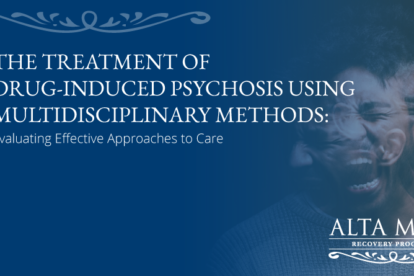
Characteristics and Symptoms of Drug Addictions
Drug addiction is a chronic brain disease that affects more than seven million people in the United States each year. In addition to its physical aspects, dependency on drugs affects mood, shapes perception, and changes behavior. The emotional and psychological aspects of drug addiction are every bit as powerful and life-altering as the physical effects of substance dependence, and all must be accounted for if treatment is to succeed. Fortunately, treatment for drug addiction can be highly effective, if recovering addicts are willing to accept the challenges involved in overcoming a troublesome and persistent behavioral health condition.
In 2019, 57.2 million Americans aged 12 and older reported past-month use of one or more of these substances: marijuana, cocaine, methamphetamine, heroin, hallucinogens, inhalants, and four categories of prescription drugs (painkillers, tranquilizers, sedatives, and stimulants).
This number represents 20.8 percent of the adolescent and adult population. Among these individuals, 8.3 million suffered from symptoms consistent with a substance use disorder, which means that more than one-quarter of current drug users are addicted. An estimated 81,000 adults lost their lives to drug overdose in 2020 (an all-time record), and the risk of sudden death is especially high among those who compulsively abuse intoxicating substances, particularly those containing fentanyl.
Physicians and addiction health specialists recognize and diagnose drug addiction based on the presence of multiple physical, psychological, emotional, and behavioral symptoms. The characteristics of drug addiction are strong indicators of serious substance abuse issues, and when they are observed they should not be ignored.
Physical Symptoms of Drug Addiction
Drug addiction is a brain disease that causes changes in neurological structure and action. These alterations inhibit or deform brain functioning and are responsible for some of the direct physical characteristics of drug addiction.
In addition to the neurological side effects, a slow decline in overall physical health is one of the inevitable characteristics of drug abuse.
Some of the telltale physical signs of drug addiction include:
- Cravings and withdrawal. Addicts go from wanting drugs to needing them in order to feel well, and if those needs are frustrated they will begin to experience withdrawal symptoms within a few hours of their last dosage. Those symptoms can include panic attacks, insomnia, elevated heart rate, shakiness or weakness, headaches, nausea, muscle cramps, and extreme anxiety or nervousness.
- Growing tolerance. As their dependency progresses, drug addicts must consume larger quantities of their drugs of choice to experience the same effects. High tolerance can prompt drug addicts to consume dosages that put them at significant risk for overdose.
- Changes in appearance. Some of the outward signs of drug abuse include excessively dry or bloodshot eyes, dilated pupils, tooth decay, significant weight loss, pale skin, hair loss, and the presence of sores that won’t heal.
- More frequent illnesses. Drug abuse damages immune system functioning and alters body chemistry in multiple ways. This makes addicts more prone to colds, flus, pneumonia, allergy attacks, bacterial infections, and a host of other potential illnesses or diseases.
- Chronic physical health conditions. Long-term drug abuse can increase risk for numerous physical ailments and conditions, including heart disease, high blood pressure, stroke, high cholesterol, liver or kidney disease, chronic respiratory troubles, skin disorders, and insomnia. Those who inject drugs and share needles are at elevated risk for hepatitis and HIV/AIDS.
Psychological and Emotional Signs of Drug Addiction
Drug addiction alters perception, can distort thinking, creates emotional imbalances, and leaves sufferers with a damaged sense of self-esteem.
The psychological and emotional characteristics of drug addiction include:
- Abrupt changes in mood. As chemical imbalances develop, drug addicts can experience feelings of depression, anxiety, irritability, hostility, and paranoia that seem to come from nowhere.
- Decrease in ability to enjoy formerly pleasurable activities. Drugs sap emotional energy, leaving little room for other types of enjoyment or pleasure.
- Rationalization and denial. People addicted to drugs erect walls of denial to protect themselves from the truth, and the attempts of loved ones to break through those walls will bring a string of excuses and rationalizations, which the drug abuser will actually believe.
- Stronger symptoms of mental illness. In 2019, 49.2 percent of people with drug abuse problems also suffered from some form of mental illness, and the symptoms of mental disorders are likely to intensify when complicated by substance dependence.
- Impulsivity. As time passes drug addicts may lose their inhibitions and suffer from impaired judgement, which leads them to make rash and questionable decisions that may seem completely out of character.
- Feelings of guilt and shame. People with addictions often feel deeply ashamed because of their inability to stop using drugs, and they also feel guilty about the pain their behavior causes for loved ones.
- Hallucinations and delusions. At the extreme edges of addiction, people who abuse drugs repeatedly may begin to lose touch with reality, to the point where immediate medical intervention is required.
In the early stages of a person’s descent into addiction, friends and family members may not understand what is happening. Or, they may have suspicions but still be uncertain.
Either way, they will know something is terribly wrong with their loved one, who may attempt to hide what they’re thinking and feeling but won’t be able to do so completely.
Get Help for Drug Addiction
Alta Mira is a Safe Place to Get Your Life on Track
Behavioral Indicators of Drug Abuse and Dependency
The inner feelings of drug addicts may be somewhat difficult to decode, but their behavior will show clear signs of their drug dependency, and of the desperation and chaos it is creating in their lives.
Some of the most common behavioral characteristics of drug abuse include:
- Lying and manipulative behavior. People trapped by drug addiction will habitually lie about their actions and whereabouts. They also won’t hesitate to manipulate others to get what they want (which is more drugs). But over time, they tell so many lies or half-truths that eventual exposure is inevitable.
- Blaming others for life problems. Unable to see through their own rationalizations, people dependent on drugs will usually blame others, or bad luck, or life circumstances, for their troubles. They become experts at making excuses to deflect responsibility and protect themselves from exposure.
- Neglectfulness. As drug addiction deepens sufferers will begin to neglect their responsibilities, as parents, family members, friends, employees, students, and citizens. Drugs become their priority, and the physical and emotional toll of their drug abuse can make it difficult to manage—or even remember—their personal responsibilities.
- Drugs take over. Addicts will spend enormous amounts of time using drugs, thinking about them, trying to obtain them, or attempting to manage the fallout from their prodigious drug consumption.
- Involvement in criminal activity, as perpetrator and/or victim. Much of it may involve stealing, either drugs or the money to buy them. But addicts often become impulsive and lose their capacity to make wise decisions, which leads them into other kinds of trouble as well (i.e., driving while intoxicated, getting involved in fights or incidents of domestic violence, choosing dangerous and untrustworthy companions, visiting high-crime districts in search of drugs, etc.).
After addiction develops, drug use becomes an all-consuming obsession. The behavior of a drug addict reflects the dysfunctional nature of their lives, and the consequences of that behavior may be severe if action to halt the progress of the addiction is not taken.
Consequences of Drug Addiction
Runaway drug addiction causes enormous life complications that go beyond its direct effects on a person’s health. Drug addicts lose the ability to manage their daily affairs, meet their obligations, or attend to the needs of others, and the result is broken relationships, financial catastrophe, unemployment, encounters with law enforcement, frequent victimization at the hands of others, and helplessness in the face of repeated failures and disappointments.
If nothing is done, drug addicts may eventually lose everything, possibly even their lives if they are not careful:
- Drug overdose is now the number one cause of accidental death in the United States.
- People suffering from substance use disorders are six times more likely to commit suicide than members of the general public.
- Drugs were involved in 43 percent of fatal automobile accidents in 2016, which surpasses the percentage of crashes that involved alcohol consumption.
The consequences of continued substance abuse highlight the urgency and importance of drug addiction treatment and rehab, which can offer a lifeline to those who are the brink of disaster.
Diagnosis and Treatment for Drug Addiction
After a diagnosis for drug addiction has been made by a physician or addiction specialist, treatment should begin as quickly as possible, since drug abuse can create a life-threatening medical crisis at any moment.
While intensive outpatient treatment programs for addiction are available, most recovering drug addicts are best served by enrolling in inpatient drug addiction treatment programs offered at residential facilities with extensive experience in drug addiction rehabilitation.
Under the compassionate, expert care of their treatment team, most recovering drug addicts will begin their healing process in medical detox, where their cravings and withdrawal symptoms can be managed to reduce their intensity and prevent them from causing health complications.
Actual treatment for drug addiction will commence after detox is complete, and recovery regimens will be tailored to meet the specific needs of each individual patient. Most residential drug rehabilitation programs will include some combination of psychotherapy (individual and group), family therapy, medication for the amelioration of withdrawal symptoms, life skills classes, training in holistic healing methods, and additional treatment initiatives that address any co-occurring mental disorders that might be present.
Following the completion of inpatient treatment, patients will transition into aftercare programs that focus on the maintenance of sobriety and the prevention of relapse, which is a risk all recovering addicts must face and deal with if they expect to stay on a sustainable path to wellness.
Drug addiction does not have to be a lifetime sentence, but it easily can be if addicts aren’t ready for a difficult and relentless challenge. Recovery from drug addiction is a long-term process, but those who are willing to embrace sobriety one day at a time have an excellent chance of restoring their health and regaining control of their fates and futures.






